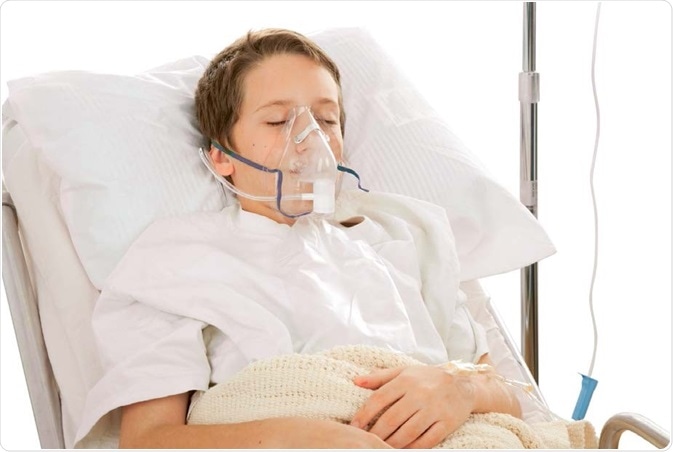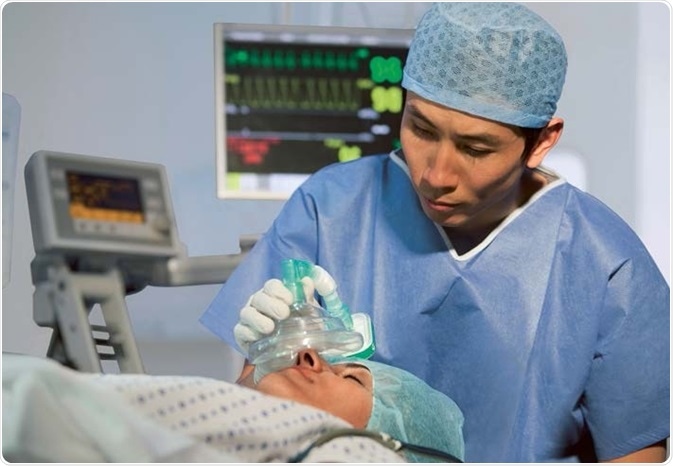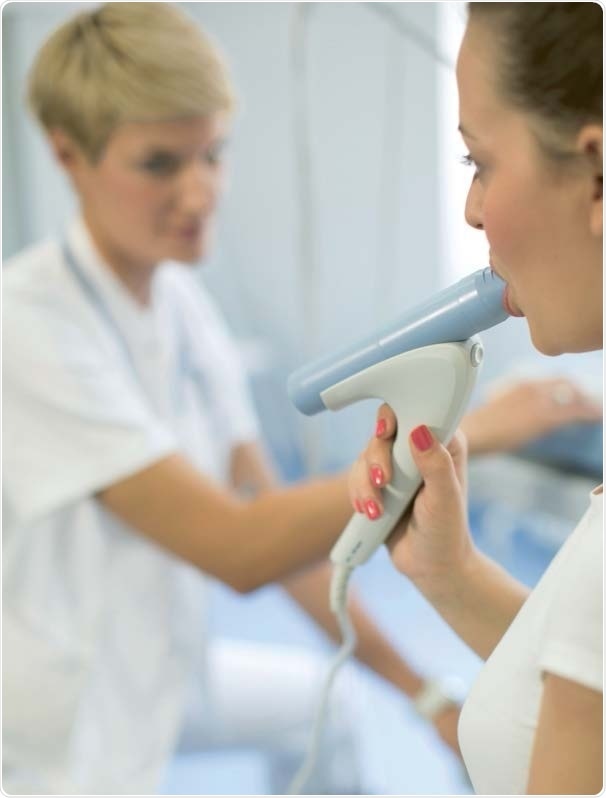Top quality sensors built into respiratory instruments are aimed at measuring the most minute flow rates around the zero point of the respiratory flow. Additionally, such sensors are able to sense flow rates of many hundreds l/minute.

Highly Reliable Flow and Pressure Sensors for Respiratory Devices
First Sensor, a strategic partner to producers of medical goods in breathing and respiration, designs and builds extremely reliable sensors and personalized sensor systems. As per EN ISO 13485 certification, the company is compliant with the exacting standards required for medical goods.
Respiratory Devices
A key element when managing or activating top quality respiratory instruments is the early sensing of a patient’s inhalation phase via a flow trigger. There is no other way for the device to aid with a spontaneous breath with preset overpressure while also ensuring that the patient’s efforts in breathing are kept to the lowest levels possible.
Furthermore, in order for a patient’s breathing pattern to be detected consistently, it is key that measurements be extremely precise over the whole range of flow for varied treatments.
Contemporary devices often contain an extremely dynamic differential pressure sensor or an extremely sensitive thermal mass flow sensor to observe the breathing activity as a whole, as well as the patient’s spontaneous respiratory activity.
Sensor Solutions for Respiratory Devices
In addition to fast and extremely responsive thermal mass flow sensors, First Sensor can deliver personalized varieties of its flow based LMI/LME/LDI differential pressure sensors which boast resolutions of 0.01% in low pressure ranges and concurrently, dynamic measuring ranges of more than 10,000.
Even flow rates around the zero point of the respiratory flow can be distinguished by these one-of-a-kind sensors, which are also able to determine flow rates of several hundred l/minute.
As well as these instruments, First Sensors also designs and builds customized multi-sensor modules as a simple ready-to-use solution for respiratory instruments. The modules, with a number of built-in sensors, make up wholly calibrated and verified systems with definite interfaces and signal processing.
Sleep Apnea Therapy Devices
Pressure sensors built into controlled CPAP instruments consistently track the therapy pressure, augmenting the treatment’s quality and comfort levels. A minor overpressure of a couple of millibars is produced by a centrifugal blower and is channeled to the patient via a system of breathing mask and tubes.
Nevertheless, the respiratory activity of the patient has an impact of the set therapy pressure of the CPAP instruments, causing the patient to put greater effort into breathing and thereby lowering the quality of the therapy.
It is therefore important that top quality apparatus with accurate pressure sensors are employed, as these can continuously compare the precise pressure value against the identified target therapy value, after which the output of the blower can be manually controlled to rapidly counterbalance any variations in pressure.
Consequently, pressure stability is a vital feature for quality as well as being an integral parameter to consider when comparing controlled CPAP apparatus.

Sensors with High Resistance to Anesthetics
Sensor Solutions for Sleep Apnea Therapy Devices
First Sensors HCE and HDE pressure sensor series can monitor the outcome of the pressure value at the instrument’s output or in the breathing mask. Thanks to their impeccable responsiveness and precision, these sensors can identify variations in pressure as small as fractions of a millibar.
The rapid response time of the sensors, as well as strong blowers and state-of-the-art control electronics, ensures variations in pressure can be accounted for at a fast pace.
Anesthetic Devices
Patients can be administered a combination of oxygen, air, nitrous oxide and anesthetics such as desflurane, sevoflurane or isoflurane using anesthesia respiratory apparatus or anesthetic apparatus. Through engagement of a vaporizer in the anesthetic instruments, the unstable anesthetics can be added to the respiratory air in carefully controlled concentrations.
The line pressures in the anesthetic apparatus, as well as the expiratory and inspiratory volume flows, are tracked by both flow and pressure sensors, making sure that the gas combinations delivered to the patient are at precisely the concentration set by the Anesthetist, as well as being at the required volume and pressure.
Sensor Solutions for Anesthetic Devices
In order to determine expiratory volume and inspiratory volume and pressure in the respiratory unit of the anesthetic apparatus, First Sensor offers differential pressure sensors or thermal mass flow sensors. For use alongside anesthetic gases, the company has also designed limited versions of its piezoresistive silicon pressure sensors, such as the HCLA and HCE series. These instruments are highly resistant to anesthetics, including desflurane, sevoflurane or isoflurane.
Spirometers
For spirometers, special pneumotachographs, for instance, according to Lilly or Fleisch, are employed to measure the respiratory flow using differential pressure sensors. Typically, the patient’s breath flows through an orifice or a laminar flow element with a minuscule flow resistance, resulting in a negligible pressure drop throughout the element, which is a measure of the respiratory flow rate, i.e., respiratory volume per time.
This differential pressure can be recorded with extremely precise sensors before being converted into an electrical signal.
To minimize unnecessary respiratory effort for the patient, the flow resistance should be maintained at the lowest possible level. If respiratory flows are approximately 7 l/second with forced expiration, and are around 0.1 l/second in spontaneous respiration, the differential pressures generated via the flow element will therefore be extremely low, ranging from less than 100 Pa to several thousand pascals (100 Pa = 1 mbar).
To determine low respiratory flows with precision of 1%, as well as to guarantee measurements over dynamic ranges of more than 10,000, it is vital to have access to extremely responsive differential pressure sensors. It is also necessary that the sensors meet rigorous specifications relating to resistance to dirt and moisture.
Sensor Solutions for Spirometers
First Sensor can deliver LMI/LDE/LME ultra-low pressure sensors ideally suited to flow rate measurement with the differential pressure method. The novel sensor arrangement, with a small sized flow channel on the chip level, permits extremely sensitive measurement of ultra-low pressures from 25 Pa (0.25 mbar) full scale with outstanding accurateness and exceptionally high resolution.

Ultra-low Pressure Sensors Measure Airflows in Spirometers
Further to this, the semiconductor technology enables condensed, steady and economical designs. Thanks to the exceptionally low air flow via the sensors, the LDE/LME/LMI ultra-low pressure sensors are extremely unresponsive to dirt and moisture. Lastly, connecting filters or tubes have no negative influence on the precision of measurements.
Products include:
- HCL Series: Temperature compensated low pressure sensors
- HCLA Series: Low pressure sensors with assimilated signal conditioning
- LDE/LME/LMI Series: Ultra-low pressure sensors based on flow measurement
- Made-to-order sensors, modules and systems
First Sensor AG
First Sensor AG is one of the world's leading suppliers in the field of sensor systems. Our company develops and manufactures both standardized and tailor-made sensor solutions for the detection of light, radiation, pressure, flow, level and acceleration for applications in the Industrial, Medical and Mobility growth markets.
The company produces in-house and along the value-added chain from component to system level.
With over 800 employees, we are represented at six German locations and also have development, production and sales sites in the USA, Canada, China, the Netherlands, Great Britain, France, Sweden and Denmark along with a worldwide partner network. We guarantee our compliance through regular successful certifications of the sites according to ISO/TS 16949, ISO 14001, EN ISO 13485, EN 9100 and ISO 9001 - matching the respective business field.
First Sensor AG is listed in the Prime Standard of the German stock exchange in Frankfurt.
Sponsored Content Policy: News-Medical.net publishes articles and related content that may be derived from sources where we have existing commercial relationships, provided such content adds value to the core editorial ethos of News-Medical.Net which is to educate and inform site visitors interested in medical research, science, medical devices and treatments.